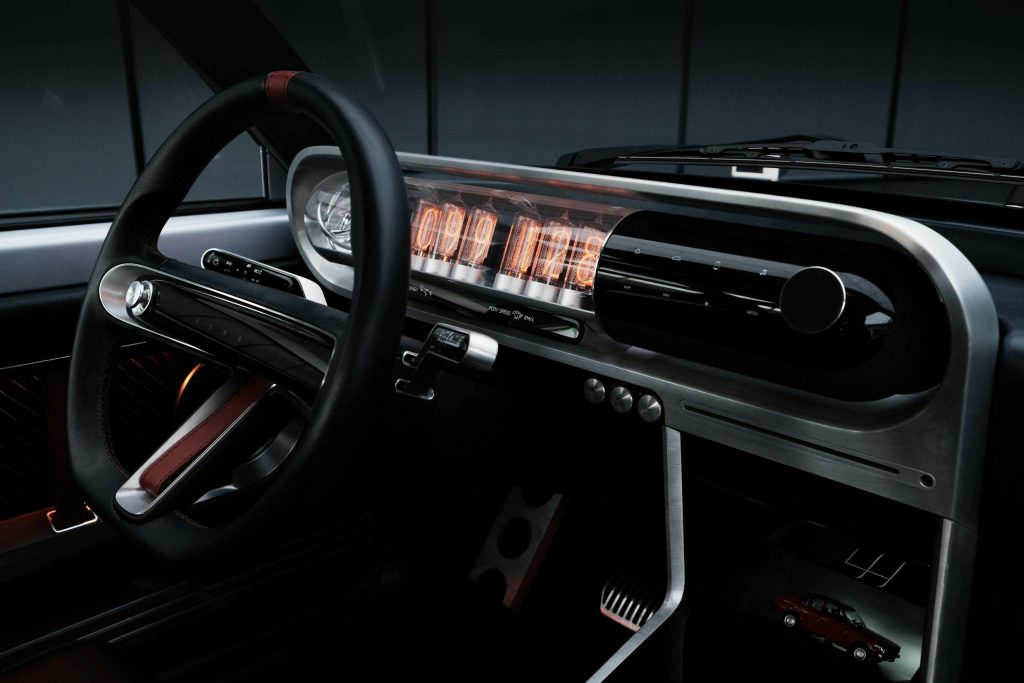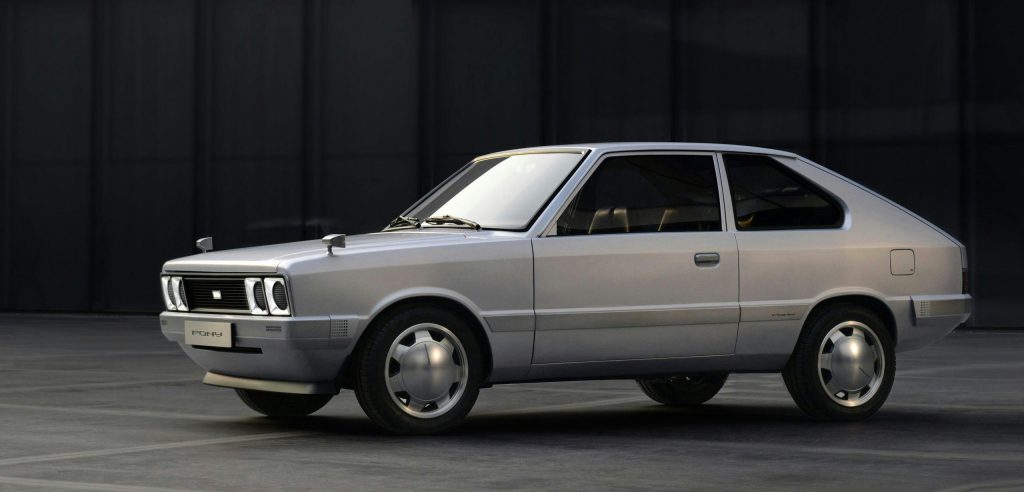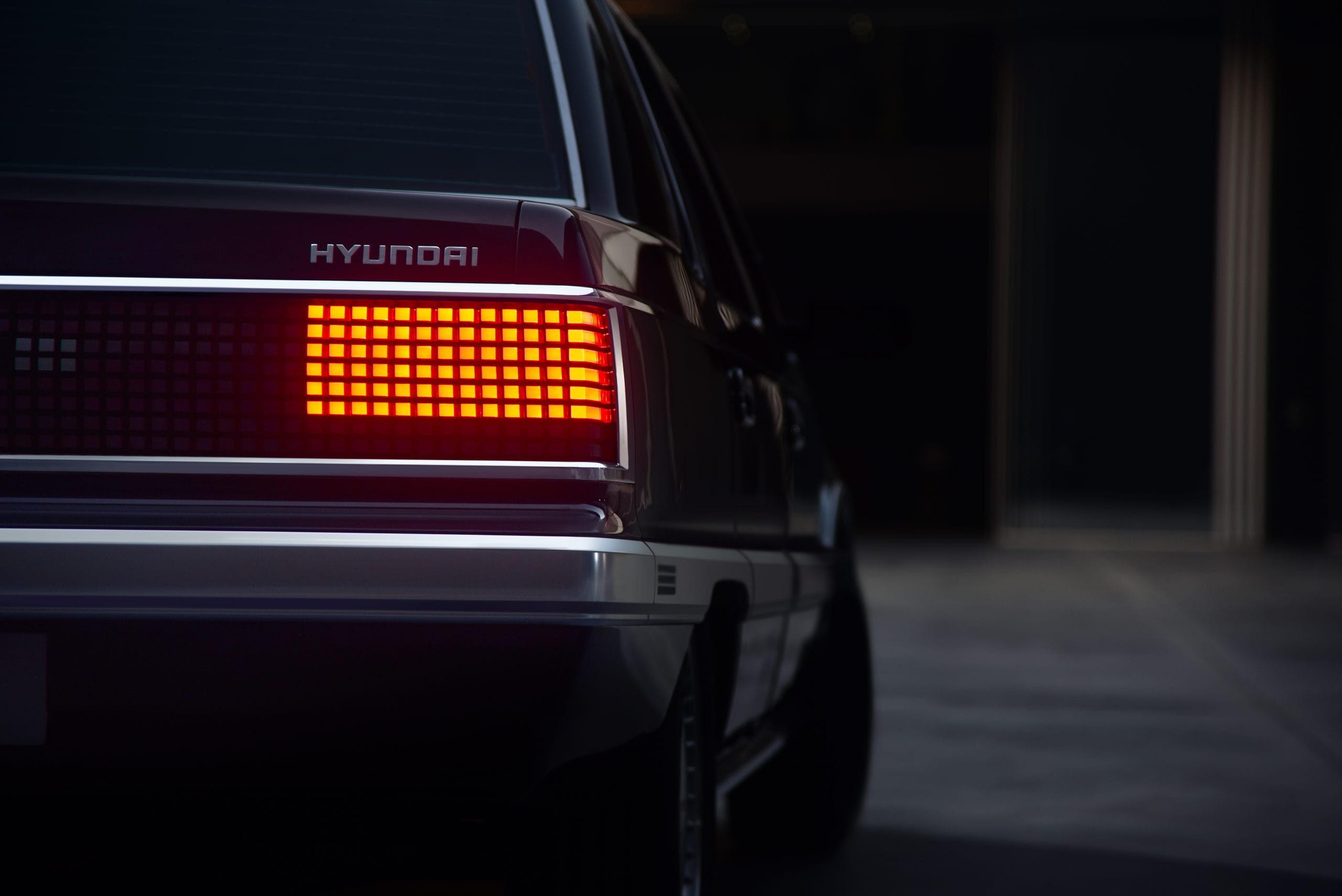In the rapidly evolving world of electric vehicles, few brands are turning to the past to chart their future with as much conviction as Hyundai. Through its Heritage Series, the South Korean carmaker is not merely indulging nostalgia, it’s extracting a design language from its earliest successes and reinterpreting it for the EV age.

The series began with a reimagining of the 1975 Pony, Korea’s first mass-produced car in 2021. Once designed by the legendary Giorgetto Giugiaro, the Pony has been reconstructed not as a retro homage but as a fully functioning electric concept. Its sharp, angular body remains intact, but everything else, from pixelated lighting to camera-based side mirrors and retrofuturist Nixie tube instrumentation, has been reinvented. The car now moves through space like a sci-fi artefact: matte silver, minimal, and somehow both analogue and digital all at once.

This is not simply a vintage restoration. The original 3-door model was disassembled and rebuilt by Hyundai’s designers with clear intent, to explore what happens when the DNA of a national design icon is revived using contemporary materials and sensibilities. The result? A Pony that feels eerily timeless, its 1970s optimism recharged with present-day precision. It’s also the aesthetic blueprint behind the brand’s current flagship EV, the IONIQ 5, whose boxy silhouette and parametric pixel lights are lifted directly from the original Pony’s design legacy.

Following that success came the Heritage Series Grandeur in 2023, an electrified interpretation of Hyundai’s 1986 luxury sedan. While the Pony speaks to accessibility and simplicity, the Grandeur project veers towards opulence. Velvet and Napa leather wrap the interior. Parametric lighting bathes the space in ambient bronze. And in a nod to its musically inclined users, a virtual piano and concert-hall-calibrated speaker system have been built directly into the dashboard.

From the outside, the Grandeur remains mostly faithful to its ‘80s form, but its proportions and details, covered wheels, polished pixel lights, reveal its modernized underpinnings. The interior, by contrast, is entirely speculative: a near-silent lounge layered in analog texture and digital interface, where vintage luxury meets speculative living room.


In both vehicles, Hyundai is experimenting with a provocative formula, modern EV architecture wrapped in the silhouettes of its early successes. It’s a statement that says heritage isn’t just a mood board. It can be a platform for innovation.

By treating its archive as a space of possibility, Hyundai is reframing the relationship between automotive nostalgia and future-forward design. In an era when many brands are chasing software upgrades and indistinguishable silhouettes, the Heritage Series suggests another route: one where memory and imagination move together.























